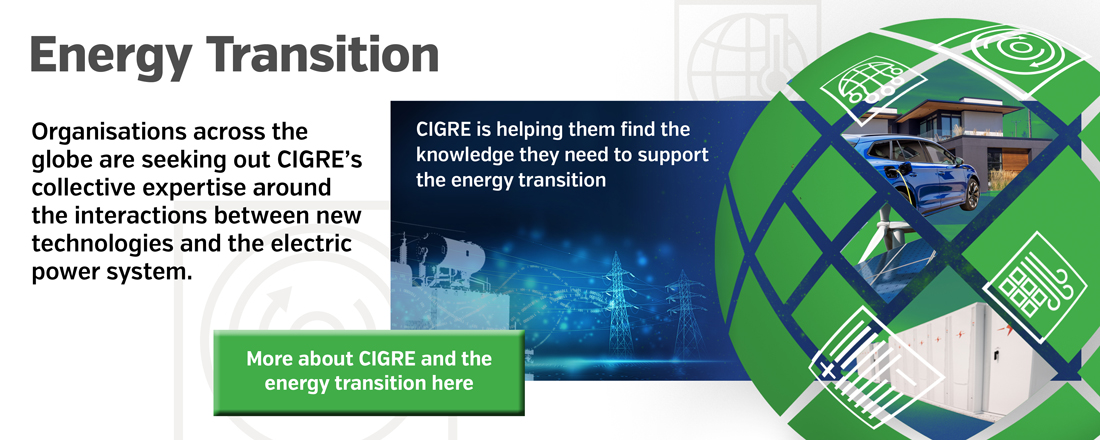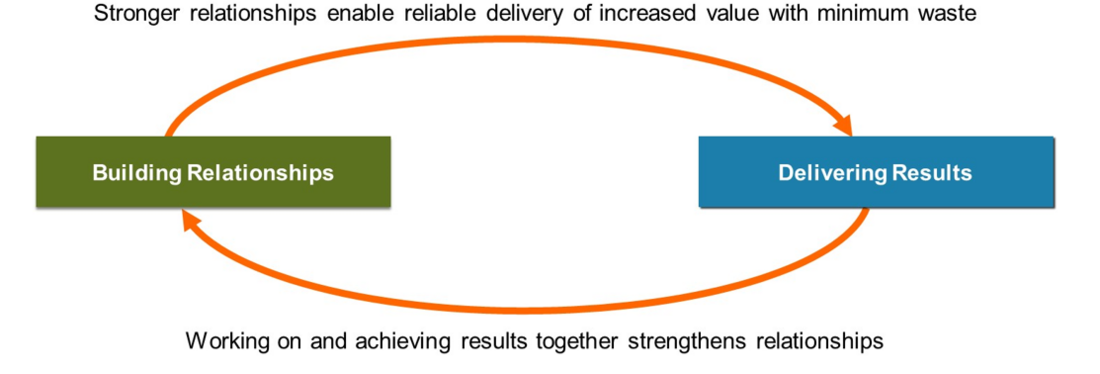Building Strong Relationships: The Foundation of Effective Collaboration
In both professional and personal contexts, relationships form the bedrock of our interactions and success. Yet, many people view relationships as passive elements of their lives — something that happens to us, largely outside of our control. This perspective often leads to misunderstandings, frustration, and unproductive engagements. However, the process of relationship building is much more dynamic and within our power to shape. By consciously designing and cultivating our relationships, we can create stronger, more effective, and value-driven connections that benefit everyone involved.

By Stewart Ramsay, Vanry Associates
Rethinking Relationships: From Static to Dynamic
Traditionally, we tend to think of relationships as static entities — as things we either have or don't have. We experience relationships with colleagues, friends, family, and others, and we often categorize them as "good" or "bad" based on the level of agreement or harmony. If there is little conflict, the relationship is deemed successful; if there is discord, it is considered problematic.
However, this view limits our potential for growth and change within our relationships. Instead of seeing relationships as fixed, we can view them as dynamic spaces that are continually shaped and molded through our interactions. Every interaction, whether positive or negative, influences the relationship's development. In this framework, relationships are not merely things we "have," but are living, evolving constructs that we actively create, design and tend to.
The Power of Intentional Relationship Building
To build meaningful and effective relationships, it's important to approach them with intention. Every conversation, action, and choice we make in our interactions either strengthens or weakens the relationship space we share with another person. Whether we are interacting with a colleague, a client, or a family member, we have the power to design our relationships to be productive, supportive, and conducive to achieving mutual goals.
This mindset shift from passive acceptance to active design can transform how we work and live together. Instead of relying on chance to provide us with "good" people to work with, we take ownership of the relationship-building process. By choosing to be intentional in our actions and decisions, we can create relationships that are strong enough to accommodate the necessary transactions and collaborations required for success.
We can think of relationships as a bowl. The size and strength of the relationship “bowl” needs to be proportional to the goals you are seeking to achieve together. The relationship bowl you have with a spouse is necessarily larger and stronger than the relationship you need with your dry cleaner. The size of the bowl can change over time.

If the goals increase in scope, complexity, or risk, then the size and strength of the bowl must be increased first. Attempting to get things done that are bigger than the relationship bowl can support generally results in spillage and waste, unless you are deliberately building the relationship as you go.
The Benefits of Intentional Relationship Design
Designing relationships with purpose offers a wide range of benefits, both in the workplace and beyond. Here are some of the key advantages of intentionally building relationships:
- Improved Workplace Dynamics: By intentionally fostering respect and trust, we enhance our reputation with others and help shape their identity with us. Respect and mutual understanding form the foundation of a productive and harmonious work environment.
- Increased Productivity: Strong relationships improve our ability to collaborate and get things done. When trust is built, communication is clearer, and goals are better aligned.
- Mutual Satisfaction: A conscious effort to design relationships increases the satisfaction and well-being of all involved. When everyone feels valued and understood, motivation and engagement improve.
- Enhanced Care for Others: Building meaningful relationships helps us connect with others on a deeper level, increasing our ability to care for and support them in both personal and professional contexts.
- Reduced Waste and Increased Value: Effective relationships lead to more efficient collaboration. When people feel connected and engaged, they are more likely to contribute their best ideas and efforts, reducing unnecessary friction and waste.
- Leadership Development: Effective relationship-building provides a natural pathway for leadership. Strong, trusting relationships enable leaders to inspire and guide others toward achieving shared goals.
The Five Core Competencies of Relationship Building
Building effective relationships requires certain key competencies. These competencies are the skills and abilities we use to engage with others in a meaningful way, ensuring our interactions are productive and beneficial. There are five core competencies that are essential for designing strong relationships:
- Granting Legitimacy: This competency involves recognizing and respecting the perspectives, opinions, and feelings of others. It requires us to validate their experiences, fostering an environment of respect and mutual understanding.
- Interpreting Concerns: To build strong relationships, we must be able to listen deeply and interpret the concerns of others. This requires empathy, active listening, and the ability to engage in meaningful dialogue to uncover underlying issues and needs.
- Building Trust: Trust is the cornerstone of any successful relationship. Without trust, collaboration becomes difficult, and people are less likely to engage fully or take risks. Building trust requires consistency, honesty, and integrity in our interactions.
- Building Alignment: Alignment is about ensuring that everyone is working toward the same goals and that their efforts are coordinated. Effective alignment minimizes misunderstandings and ensures that everyone is on the same page, reducing friction and improving collaboration.
- Gratitude and Appreciation: Showing appreciation for others’ contributions and efforts strengthens relationships. Gratitude creates a positive cycle of reinforcement, encouraging further collaboration and fostering goodwill.

The Interdependence of Competencies
These five competencies do not operate in isolation. Instead, they are interconnected and rely on one another to create meaningful relationships. For example, effective communication — which includes granting legitimacy and interpreting concerns — builds trust. In turn, trust allows for greater alignment and collaboration. Gratitude and appreciation reinforce the efforts to build trust and alignment, creating a virtuous cycle of positive interactions.
The process of developing these competencies is not linear but ongoing. As you strengthen one area, you naturally improve others. Conversely, challenges in one competency can impact your ability to perform well in others. Therefore, cultivating competence in all five areas ensures that your relationships are well-rounded and capable of supporting both personal and professional growth.
Foundational Competence: The Building Blocks of Effective Relationships
To effectively design and nurture relationships, it is essential to develop foundational competencies. These competencies provide the underlying skills necessary for building relationships, delivering results, and fostering meaningful interactions. The foundational competencies can be grouped into three main categories:
- Bedrock Competencies: These are the fundamental competencies that enable all other relationship-building efforts. They include care and compassion, learning, listening, and maintaining a productive mood. These skills form the foundation for everything else and are crucial for creating a supportive and positive environment.
- Building Relationships: This set includes the core competencies mentioned earlier, such as granting legitimacy, building trust, interpreting concerns, building alignment, and showing gratitude. These competencies are essential for designing and maintaining relationships that are capable of supporting productive collaboration.
- Delivering Results: Effective relationships are not just about building rapport but also about achieving tangible results. This set of competencies includes assessing and making assertions, managing requests and offers, keeping promises, and ensuring workflow is efficient and aligned. When these competencies are developed, relationships can drive both progress and success.
The Symbiotic Relationship Between Relationships and Results
An essential insight from this approach to relationship-building is that relationships and results are mutually reinforcing. Strong relationships enable effective collaboration, which leads to better results. Conversely, achieving results together builds trust and strengthens the relationship. This feedback loop creates an environment where people are motivated to continue working together and improving.

For instance, when trust is established, individuals are more likely to take on larger challenges and make bigger promises, which leads to more significant results. Similarly, when results are delivered successfully, they reinforce trust and deepen the relationship.

Cultivating Leadership through Relationship Building
One of the most powerful outcomes of intentional relationship-building is the development of leadership. Leadership is not confined to those in formal leadership roles but can emerge from anyone who identifies a path forward that benefits the group. Leadership arises when someone takes responsibility for creating value and ensures that everyone’s needs and concerns are addressed.
In any organization or group, strong relationships provide the foundation for effective leadership and collaboration. By investing in the design and development of these relationships, we create an environment where everyone has the opportunity to contribute, lead, and grow. Ultimately, the more we understand and practice relationship-building competencies, the more we can increase the happiness, satisfaction, and success of all involved.
Thumbnail & banner credit: beast01 on iStock